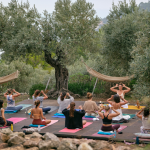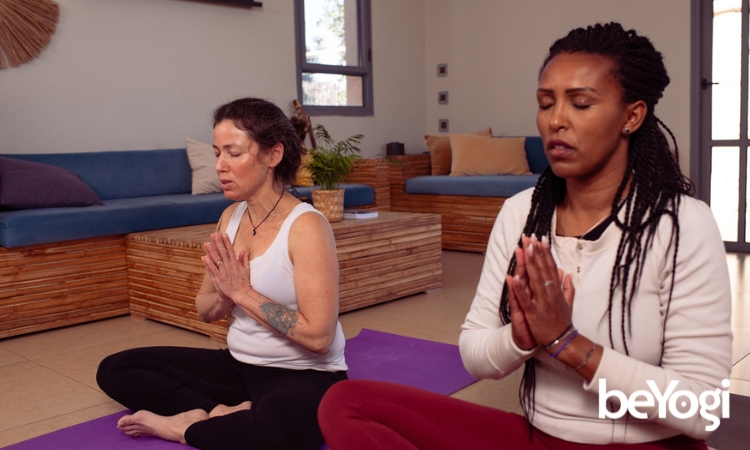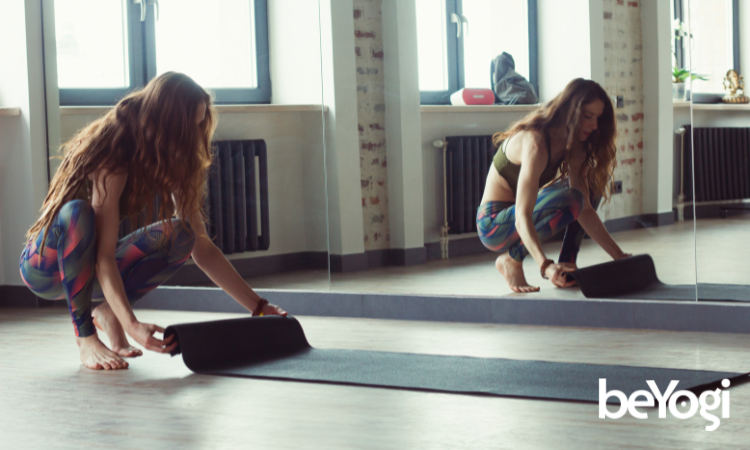
From Studio To Festival – Shifting Your Yoga Teaching Style For Events
August 26, 2025
Online Yoga Teacher Training or In-Person? Pros, Cons, & Which is Right For You
September 3, 2025Somatic Yoga Explained: What It Is, Why It Helps, and How to Start

Yoga trends come and go, but there is something quietly profound about somatic yoga. This style is not just another fad; instead, it is a gentle shift that starts deep within and changes how we move, feel, and connect with ourselves.
For many yoga and wellness instructors, adding somatic elements to classes has opened up new ways to help students release tension and reconnect with their bodies in a world that rarely slows down. So, what is somatic yoga, really? And how can teaching it help you reach students who crave a more conscious, healing practice?
Keep reading to see what makes this practice so unique, how it works, and how to share it with your students.
KEY TAKEAWAYS
Somatic yoga emphasizes internal awareness over external alignment, guiding students to move mindfully from the inside out rather than striving for perfect poses.
The practice is gentle and introspective, making it ideal for those seeking stress relief, emotional release, or a break from fast-paced, physically intense yoga styles.
Instructors are turning to somatic yoga because it helps students manage stress, reconnect with their bodies, and heal in a way that feels safe, calm, and meditative.
Scientific studies support its benefits—one study found it improved balance, flexibility, and pain relief in cancer survivors after just eight weeks of practice.
Somatic sessions include body scans, slow movements, and pauses, focusing on how the body feels in the moment rather than achieving specific shapes or transitions.
This style is especially supportive for trauma-sensitive classes, students with chronic pain, or those overwhelmed by traditional, fast-paced yoga flows.
Instructors are encouraged to explore somatic yoga personally first, then gradually introduce mindful movement and pauses into their teaching before offering full classes.
beYogi insurance covers over 500 modalities, including somatic yoga, giving instructors the freedom to grow their offerings while staying fully protected.
What Is Somatic Yoga?
Somatic yoga is yoga from the inside out. Rather than aiming for a perfect pose or focusing on how a pose looks, somatic yoga encourages you to tune in and sense what’s happening inside your body. Instead of pushing or forcing, this practice invites you to pay close attention to how your body moves, where it holds tension, and how it naturally wants to soften.
The word soma comes from Greek and means “living body.” It reminds us there is more to the body than what we see in a mirror. From the outside, we’re just a shape. But inside, we’re made up of feelings, tiny movements, and thoughts that guide how we move. Somatic yoga helps us tap into that inner world and treat the body as a living, sensing being, not just something to sculpt or control.
Unlike fast-paced styles like vinyasa, somatic yoga gives students space to move and be still in a gentle, easy way. For many people, it’s a chance to build a kinder connection with their bodies. It is less about getting it right and more about feeling what’s truly happening in each moment.
Why Instructors Are Turning to Somatic Yoga
Students today carry more stress, tension, and screen time than ever before. Many come to class feeling disconnected from their bodies and overwhelmed in their minds. Somatic yoga gives them a safe and gentle way to release that tightness and come back to themselves.
When teachers guide students to move from the inside out, it helps them stay present and calm, almost like meditation in motion. Small, mindful movements can quiet the mind without forcing the body into rigid shapes. This makes somatic yoga especially helpful for students who feel stiff or anxious in faster-paced classes.
One 2019 study even found that after just eight weeks of somatic yoga and meditation, cancer survivors felt better balance, more flexibility, and less pain from chemotherapy side effects. It’s a good reminder that gentle, mindful movement can make a real difference in how people feel day to day.
Working in this softer way can bring deep release and ease to both body and mind. Because students learn to notice what they feel moment by moment, they often find that old tension melts away naturally. This style also fits well in trauma-sensitive classes or private sessions where students need extra care.
Movement that flows with how someone feels—rather than following a strict pose—can meet people where they are. Many students find this helps them manage stress, soothe sadness, and even feel more energy and calm day to day.
If you want to see how this looks in action, check out these free webinars on Somatic Yoga Adventures for Anxiety and Somatic Adventures: Releasing Emotions. They’re full of ideas to help you support students who need a softer, more mindful touch.
What to Expect in a Somatic Yoga Session
Somatic yoga classes feel different from a traditional yoga flow. Instead of flowing quickly from one pose to the next, expect gentle, slow-paced movements, calm breathing, and lots of pauses to check in with how your body feels.
A session might start with a simple body scan, where students notice where they’re holding tension or feeling tight. From there, you might guide them through small spinal or joint movements that help soften stiff areas. Familiar poses can still show up, but the goal isn’t to hit a perfect shape. Rather, it’s to feel what’s happening inside the body.
Teachers often encourage students to move in a way that feels good in the moment, even if that means changing a pose or taking extra time. This helps people with chronic pain, tight shoulders, or frazzled nerves feel safe and supported.
When you bring new styles like somatic yoga into your teaching, it’s always smart to make sure your professional liability coverage includes every technique you offer. At beYogi, our insurance includes over 500 modalities, so you can try new techniques and help students relax, knowing you’re protected too.
How to Start Teaching Somatic Yoga
Ready to share this practice with your students? A good place to begin is by exploring it for yourself first. Try weaving small somatic movements or mindful pauses into your own daily routine. Notice how they feel in your body. The more you sense for yourself, the easier it is to guide others.
Many teachers test a few simple techniques in their regular classes before offering full somatic yoga sessions. This helps students get comfortable with the slower pace and inward focus. Over time, you might build full classes or private sessions just for somatic work.
If you want to learn more, look for somatic yoga teacher trainings or short workshops to build your confidence. Our linked seminars are a good starting point if you want practical ideas and support from experienced teachers.
- Somatic Yoga Adventures for Anxiety
- Somatic Adventures: Releasing Emotions Through Somatic Therapy and Yoga
Most importantly, remember what makes somatic yoga special: keep it gentle, slow things down, guide your students inward, and encourage them to notice what they feel without judgment.
Taking Somatic Yoga Further
If you have ever wondered what somatic yoga is, now you know: it is a mindful, deeply restorative way to help students release tension and build trust in their own bodies.
As you grow your classes and add new techniques like somatic yoga, your coverage should keep up with you, too. beYogi offers yoga teachers nationwide protection that follows you wherever you teach, whether that’s in studios, online, or in private sessions across all 50 states.
Every policy uses occurrence form coverage (the industry gold standard) and protects you for over 500 wellness modalities, so you stay covered even if you teach more than one specialty.
- When you are ready to grow what you offer, beYogi makes it simple to stay protected. Buy your Somatic Yoga Teacher Insurance today and cover every class, every client, and every new technique you teach.
Get Yoga Insurance & Protect Your Yoga Teaching Career Instantly
Save $24


